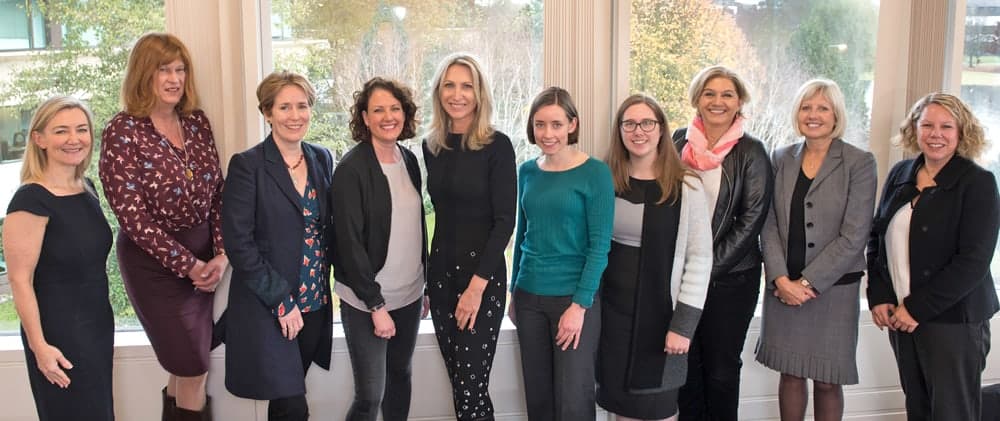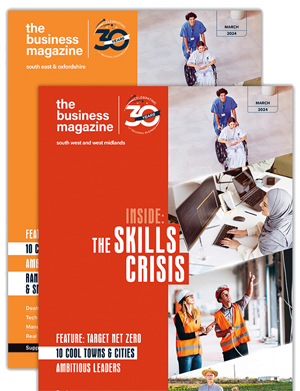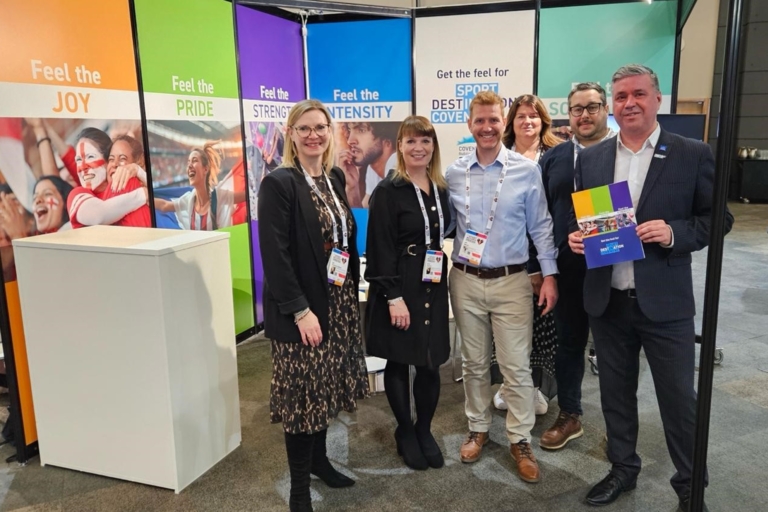Attracting and retaining valuable female talent

The Business Magazine hosted this Women in Business roundtable at KPMG’s office in Theale. It was co-sponsored by KPMG, Barclays, Blake Morgan, recruitment consultant Ten2Two and Windsor Vehicle Leasing. The panel took on the issues of how businesses can attract and retain female talent, and how they can create an inclusive culture for all employees.
Journalist Tim Wickham reports the highlights
There was general agreement from the panel on the need to broaden attitudes about flexible work patterns towards ‘intelligent working’, as well as widening the pool of talent for businesses to recruit from, particularly by including more returners. There was a consensus that younger generations are playing a crucial role in accelerating the pace of change in attitudes. And panel members acknowledged that the debate has to be carried forward by women and men together.
Action or inaction?
The panel began by discussing actions, and barriers, to attracting and retaining more women in the workforce. Barclays has been looking at this across the south and South Wales region, said Vikki Hemming. “We know we need to plan for long-term succession and that there are more men in leadership positions in our organisations. We are trying to encourage women to promote their talents more. We recently ran a survey asking people if they felt ready for their next role and if not why not and what might help them. We acted on this by supporting them in areas such as interviewing skills and CV writing.”
Fi Warren-Smith emphasised that confidence is one of the main differences between the genders. “You sometimes find men overstate the things they have done when applying for new roles. On the other hand, women may be awesome at something but not push themselves forward.”
Sarah Chapman pointed out: “I would think that when you take on a senior role in a company, it could be an intimidating environment if there is no one similar to you around to be a role model.”
Kath Shimmin drew attention to a ‘push and pull’, especially in banking and law. “Men have learned behaviours in how they traditionally deal with women, and perhaps have never had to deal with many women at senior levels. If you want to get away from a slightly confrontational approach then you have to include men in finding a solution.”
Sharon Pursey talked about her experience starting up a business. “There’s a responsibility to develop a diverse culture from the beginning. We have had to be inclusive and diverse, just to exist. I think companies could publish demographic information about their staff. I don’t know how people might feel about publishing salary levels as well.”
STEM struggles
Attracting women is more of a challenge in some sectors than others. Science, technology, engineering and mathematics (STEM) businesses have always struggled. Louize Clarke: “I think STEM needs to be totally repackaged. It can be hugely unrelatable to women, who tend to have more of a creative leaning. Yet there are opportunities for women out there, so we have to encourage people to just go and find them.”
Chapman agreed STEM has an image problem: “There are problems in areas like the language used in recruitment advertising and the workplace. The work we do in our Women’s Leadership Forum around profiling and champions, benefits men, too. We have to show the next generation that creativity and collaboration are valued skills in STEM.”
Are businesses being flexible enough?
It was clear from the discussion that many employers are behind in offering alternative arrangements to women – and men – who don’t want to work traditional hours. Warren-Smith: “There are many factors at play here. Some women have other priorities and may not want to take on more responsibility at work. They will only take promotion to a certain level because they know there will be too many conflicting interests after that.”
Karen Witton: “I think a lot of women feel it is an ‘either/or’ choice they have to make. I also have men wanting to work flexibly – so it’s about men as well.”
Shimmin: “We could start helping by moving the dial a little each time we bring people back into the workplace, so we encourage more people to return to work.”
Warren-Smith added: “Where I think the dial is slightly ahead is in larger businesses that can afford to create a more flexible environment. It’s a luxury to have; smaller companies might not have the resources. It can be really tough offering greater flexibility when you are small, and if your margins are squeezed.”
Changing attitudes and language
There can be a certain stigma attached to part-time and flexible working. The panel looked at ways to address this. Witton said the language used around inclusion and diversity is important. “We call it intelligent working rather than part-time or flexible. Intelligent working is something everyone can do and helps us get rid of the stigma.”
It can be a struggle to find part-time roles for people who can’t commit to full days. Clarke noted: “We have students who can plug the skills gap, but there’s little flexibility from employers. It’s about educating people that part-time can bring a huge cultural shift and can be an asset, rather than a liability.”
Chapman: “You just want a job to get done. It doesn’t matter who does it or how, for example, by using job sharing, flexible hours or remote working. Spreading skills among a group is helpful. It’s important that mums don’t feel pressured to return full-time but instead can discuss different options openly, considering what could work for them, their family and the business.”
Shimmin: “We need to get away from presenteeism – the idea that you have to always be at your desk if you are to be effective.”
Dr Alessandra Sherman described the experience at her company. “We have made it a collaborative environment with people from all backgrounds. There were men saying you keep going on about the gender gap. But it’s more than that. It’s about addressing the disability gap, the ethnic gap, the gap across the payroll – and that affects men as well. Teams need to realise the benefits of having different people. For us, it’s all about diversity, inclusion and tolerance.”
Creating a culture of inclusivity isn’t easy for companies to achieve. The panel voiced frustration at the difficulty in overcoming barriers without imposing quotas. Shimmin observed that the law industry is both hierarchical and male dominated. “It’s a double difficulty for women. You have to shift the culture to leave the door ajar for everybody.”
Witton noted the importance of bringing everybody on the journey of change. “Our firm has debated setting quotas or targets for the number of women employees. I think that sends the wrong message and devalues the commitment and achievement of women in business. I don’t want anyone to think that a female is in a position because of her gender, rather than on merit. That’s why it’s so important men are involved in this discussion and we find the solution together.”
Recruitment hurdles
The recruitment process is often the first chance women have to assess a prospective employer and decide whether they match up to their expectations about inclusivity. Views about a company can be formed early on, said Hemming. “In the interview process, why do you often have two men doing the interviewing? If a mixed panel conducted the interview it would give a gender balanced view of the applicant.”
Witton: “We push back with our recruitment consultants by challenging them to go out and find the type of people who we should be trying to recruit for a particular role, rather than just providing us with a list of people who had replied to the advert. That way, we can target a broader range of candidates.”
Young challenge traditional approaches
The panel was positive about the energising effect of younger employees who are more likely to challenge the status quo in male dominated workplaces. Warren-Smith: “With younger people coming through, I’m seeing a resurgence in the passion for gender equality and fairness. Strong women won’t put up with the current situation.”
Having career aspirations can be a bit of a middle-class advantage thought Pursey. “I work in schools and with vulnerable children in deprived areas, where people have fewer aspirations. Whereas children coming through private education generally learn to be more confident in their ability. So responsibility is also on government and education to make change happen.”
Preparing for the future of work
Technology is transforming the workplace. The panel agreed it should be a key tool to enable flexible working and encourage returners back. Chapman: “We can tap into this, although there are challenges to adopting new technology. I think if you give the problem of finding creative solutions for flexible working to a diverse group then you’re more likely to see how ideas on technology can be used.”
Technology, and artificial intelligence in particular, will have a sea change on society, believed Warren-Smith. “Already, many younger people could have 20-30 different jobs during their career. Where gender fits in I don’t know, but I think women will be massive leaders of it because we are able to adapt and be more fluid with changing work patterns.”
Alice Attwood shared her perspective having recently joined the property sector. “In my experience, my ideas are taken on board and I work in an environment where I can challenge things. I work in a property planning team and there’s about a 50/50 split between men and women. However, this is different to other departments which would love to have more women but they are not going into those jobs. Construction companies also have trouble attracting women, but there is a huge effort is being made in the industry to recruit and retain more women.”
Clarke was surprised by the seemingly entrenched attitude of some students at a recent event run by her company. “We mixed students from different schools and asked them to form into technology or business teams. Students from male-dominated schools said 'we’re doing technology, the girls will do business'. That was an eye-opener for me. Perceptions are fixed at this early stage. So there’s a lot of work to undo.”
Sherman: “It comes back to the idea of inclusion and tolerance. Do you say there’s a person – or there’s a man, or woman? You should just see a person. I really think the diverse, inclusive and tolerant options need to be emphasised so that men and women of all types are included.”
Right role, right pay
Tackling the gender pay gap is a massive task and the panel only had a little time to touch on the subject. They noted that with statutory and voluntary disclosure of pay levels, we are entering a new age. Shimmin: “We’re starting to challenge the gender pay gap, but are still a bit predisposed to deal with those who shout loudest. We are looking at how we redefine roles for women, how they can be rewarded and recognised for what you are good at. We are in the early stages at moment.”
Warren-Smith: “This is so important. We should allow people to work in their ‘flow’, doing what comes naturally, rather than saying ‘your job spec is this, this and this’. People can add more value in a role where they will shine.”
Witton: “We are putting in a process around gender pay. It’s about making sure we are paying people appropriately. Who that person is shouldn’t come into it. And if there is a reason why one person is in a lower band than a colleague in a similar role, then we test our findings to understand why. This is giving us interesting insights and will help us to change.”
Hemming: “We have to be careful about the attitude that ‘they’ll leave if we don’t pay them more’. And we also have to dispel the idea that if you stay in a role long term it could hinder your ability to progress because many roles will change over time offering the opportunity for development and advancement.”
Chapman: “Another challenge we have to overcome is the filtering process that can stop people applying for higher level roles, for example, working parents not being able to commit to overseas assignments. But there are ways of creating more ‘family friendly’ roles, through job shares and by using technology.”
Sherman pointed to the impact greater disclosure will have. “There’s massive change coming around the gender pay gap, especially with publicity like the salaries the BBC pays men and women. They are being forced to address the problem. Traditionally, job roles were about filling ‘dead men’s shoes’: when someone retires, everyone moves up one place. Now, it is becoming far more merit oriented."
Opportunities for returners
One of the biggest areas of concern was the difficulty faced by women looking to return to work. Panel members shared examples. Witton: “All our new offices are hot desks only. We encourage returners to work where and when they want, for example, from 9am-3pm, picking up kids from school, and then doing a couple more hours later. We measure performance on outputs.”
Shimmin: “We have a colleague who returned and now works a three-day week. They spend one day in one of our offices, one day in the other office, and then spreads the other day across the rest of the week, which is actually better for us because the resource that person provides is available on a much more flexible basis.”
But Clarke observed: “A problem for the Digital Gum cohort is they simply can’t find these opportunities. The bigger companies that have returner programmes tend not to offer less than five days a week. And recruiters can be less keen to work with candidates who might be harder to place, as they might not be able to earn their fee.”
Chapman had also seen differences in how companies respond to returners. “It’s great to hear what some companies are doing, but there are still many who are not there yet. Some are introducing flexibility internally, when people already have the job, but they aren’t yet at the stage of advertising flexible roles.”
Sherman: “I heard of a case where a company wanted to recruit a woman. After advertising the job at one pay level they only received applications from men. When they dropped the pay level there were lots of applications from women. That comes down to confidence.”
Warren-Smith added: “On the other hand, some firms take you more seriously if you ask for more.”
Attwood: “At university, all the focus was on academia, on knowledge. They don’t necessarily teach you things like negotiating skills in pay reviews. There is almost a fear of asking for more.”
Takeaways from the discussion
At the end of the discussion the panelists summarised what were key points for them. Witton: “I’m thinking how we can give people more confidence to return to work. We need to discuss with our recruiters how we can be better about this, so we attract the best talent.”
Sherman: “Our company employs people for a range of lifestyle reasons. I’ve realised we can look at taking on more people from backgrounds like experienced returners or people working from home.”
Chapman: “It’s really good to look outside your company and how you can work locally with other organisations to overcome challenges. It’s about matching problems to solutions.”
Shimmin: “We can cast our net wider when we recruit. And we should encourage aspiration, especially in young people, whatever their social background or gender.”
Clarke: “I can see how important it is to give people confidence to apply for roles. Or perhaps to think about starting their own business instead of applying to join a company. They create their own opportunities and a work-life that works for them.”
Warren-Smith: “If we can change the language we use, like calling it intelligent working, we can make the idea of flexible working more exciting. We can scale up what we are doing with flexible working because there’s such an appetite for this.”
Attwood: “Communication is key – and creating an environment where people know it’s okay to voice their opinions and ask questions. If you’ve got a good worker you have to ask yourself how are you going to retain them.”
Hemming: “For me, it’s about having more role models. We need to get out there and shout about what we do well and give people, especially the young, career aspirations.”
Participants
Sarah Chapman: Technical manager, 3M
Louize Clarke: Co-founder, ConnectTVT
Alice Attwood: Planner, Vail Williams
Vikki Hemming: Relationship director, Barclays
Sharon Pursey: Co-founder, SafeToNet and CEO, SafeToNet Foundation
Dr Alessandra Sherman: CEO, United Konsultants
Kath Shimmin: Partner, Blake Morgan
Fi Warren-Smith: Owner, FWS Properties
Karen Witton: Karen Witton
Tamsin Napier-Munn: Campaigns manager, The Business Magazine, chaired the discussion
Entries are open for this year's Women in Business Awards.
Enter now - www.womeninbusiness.biz
@Women_in_B #WiB18












